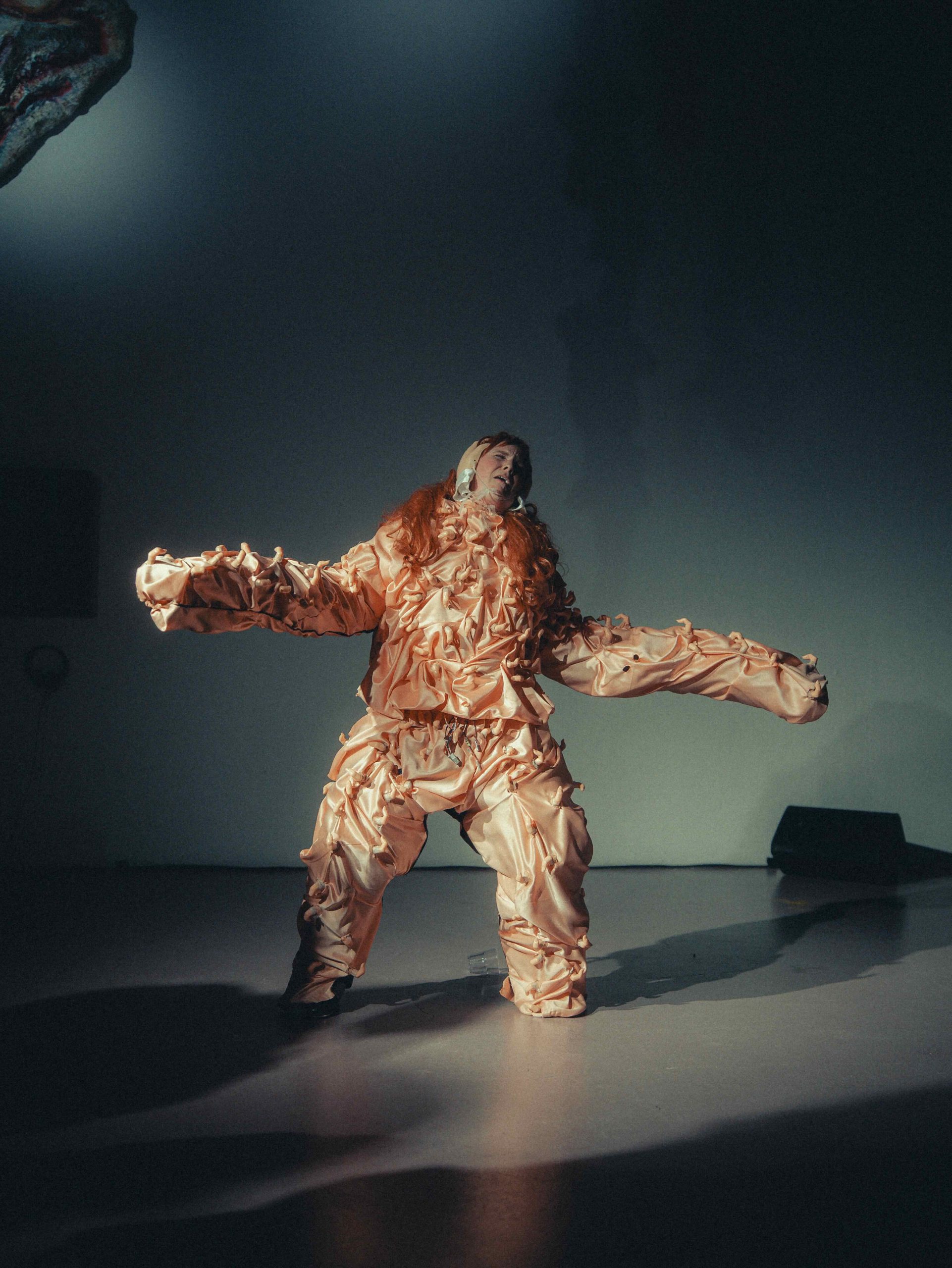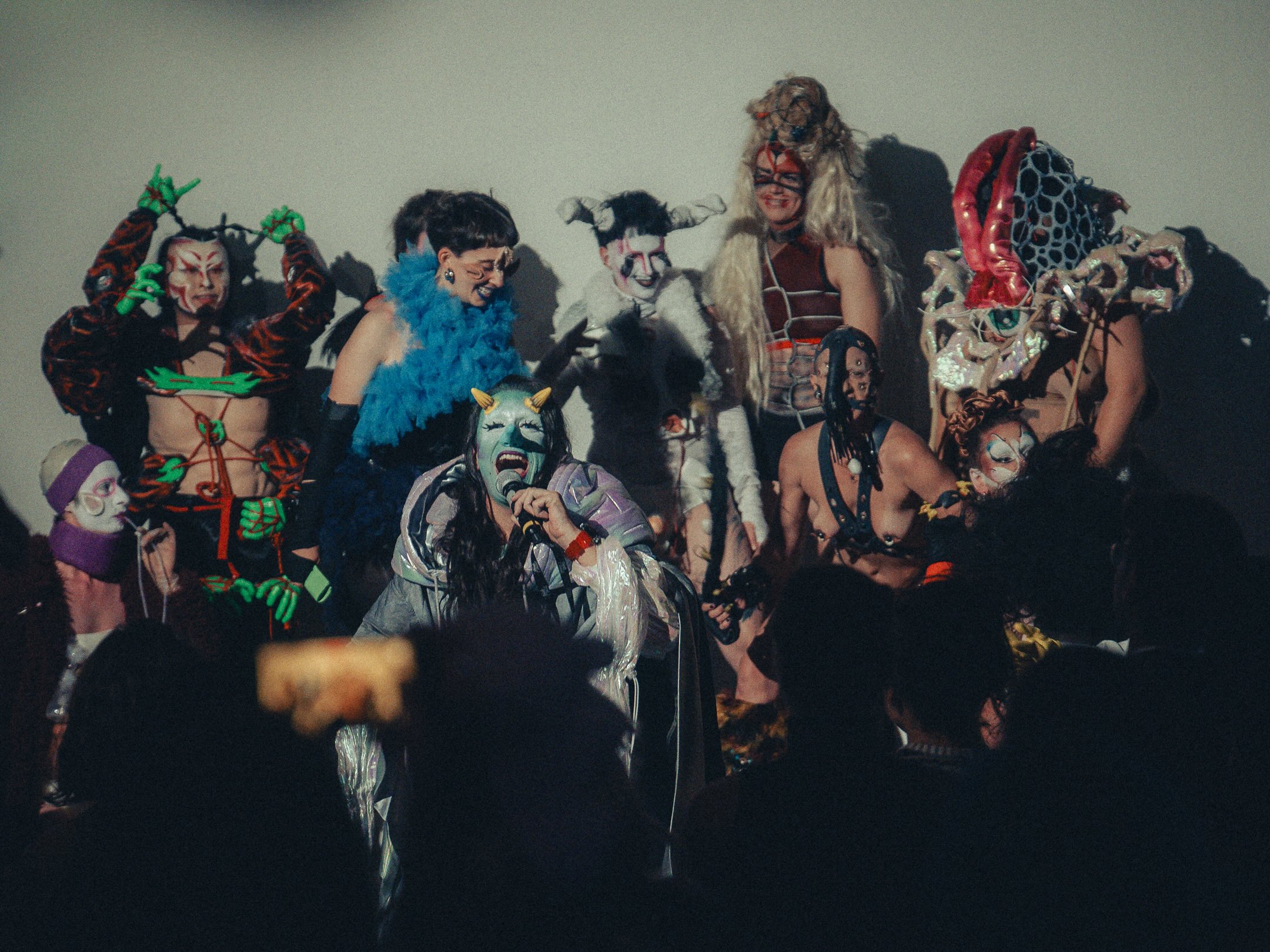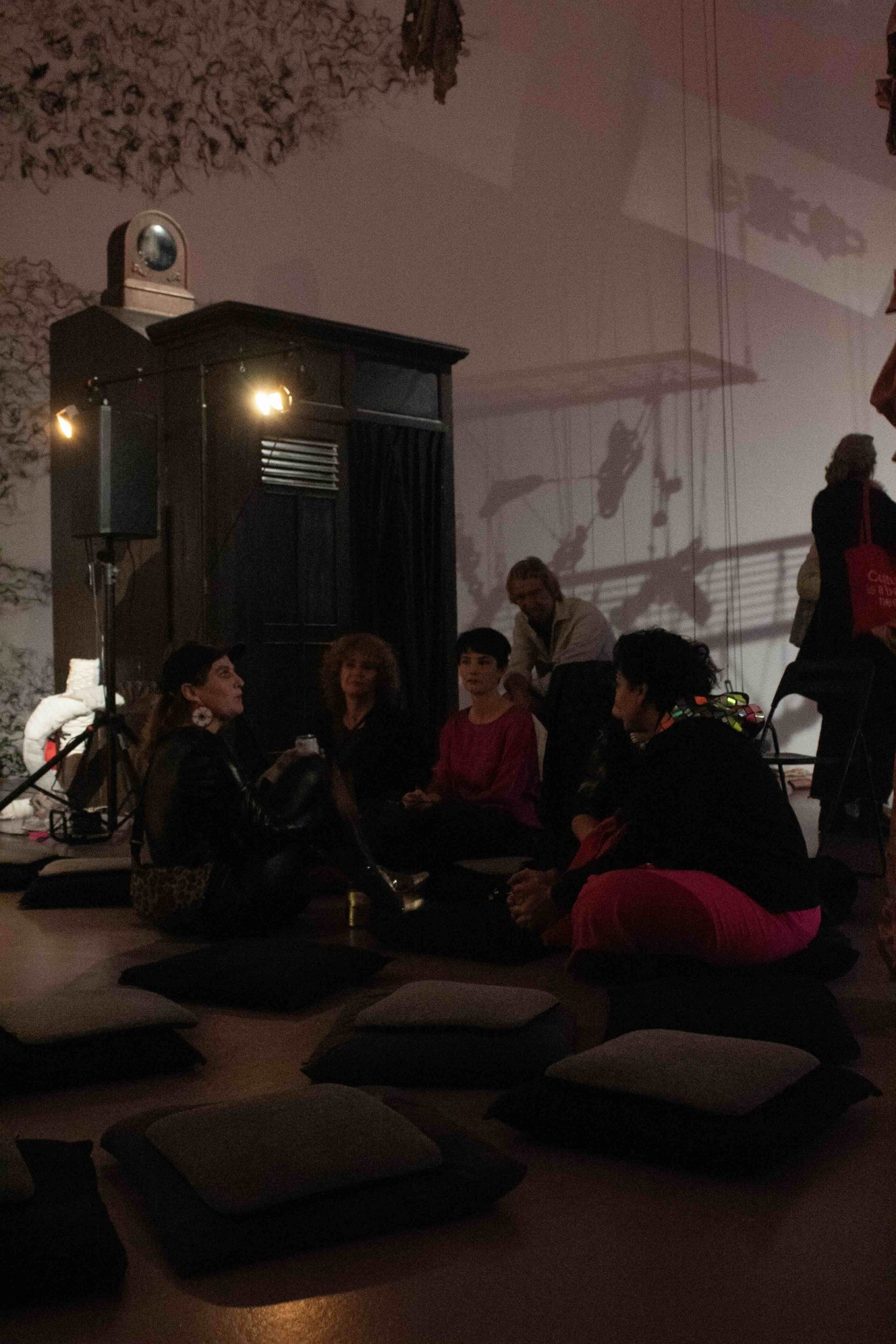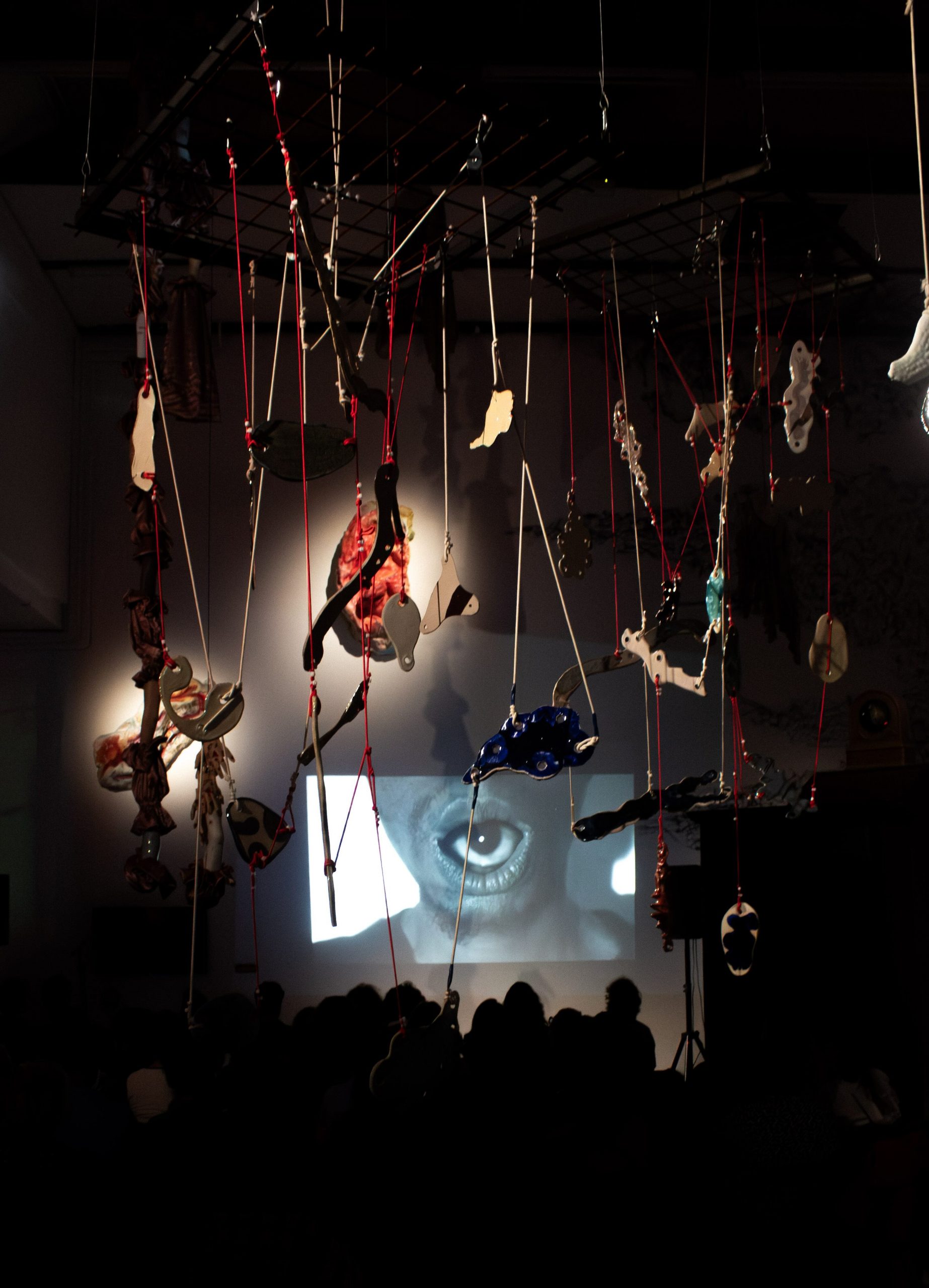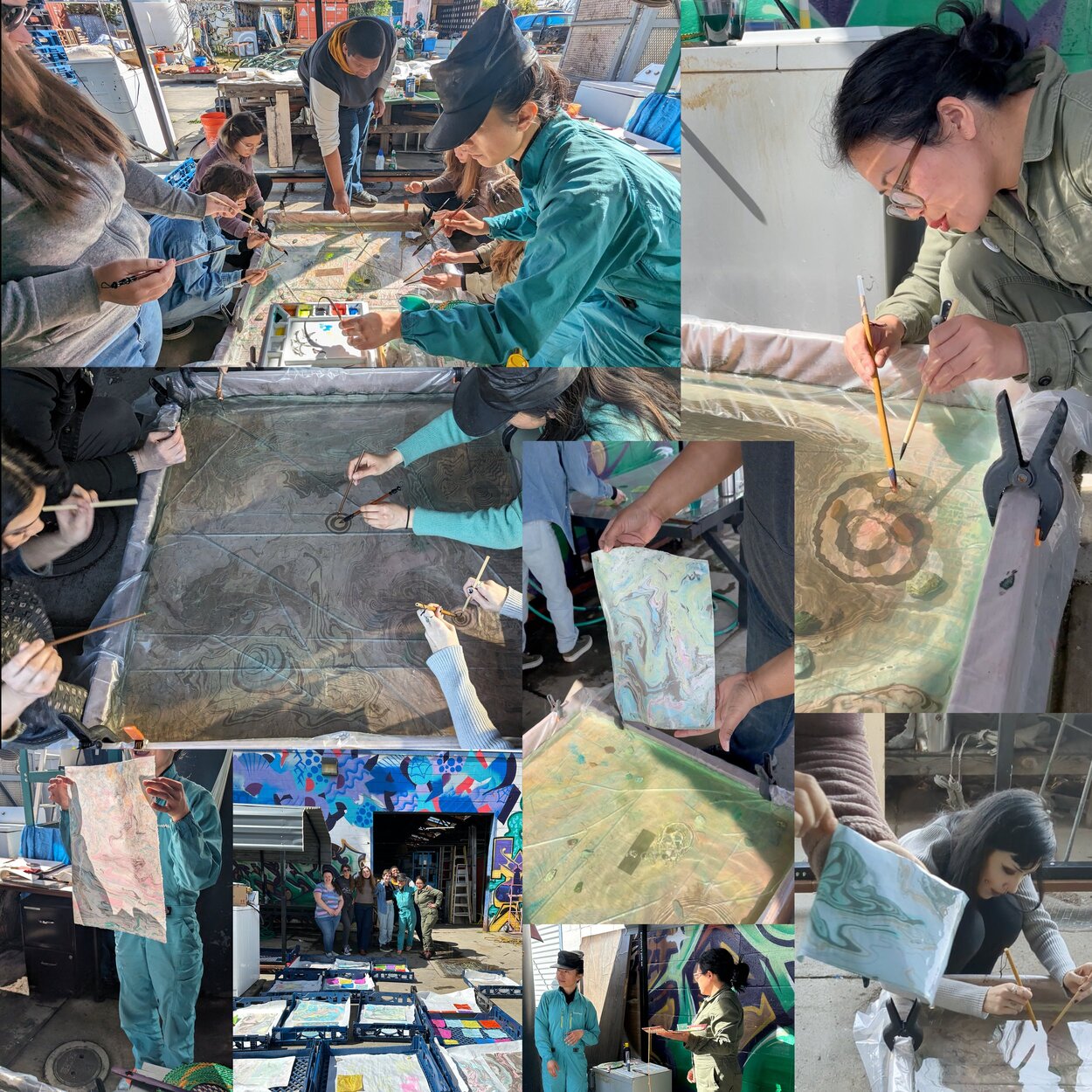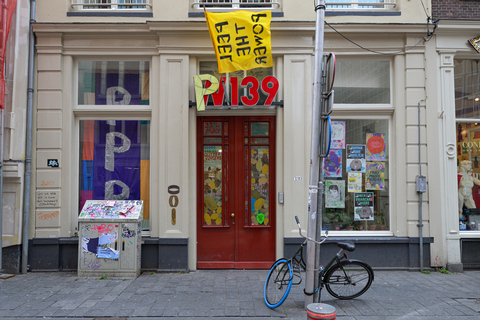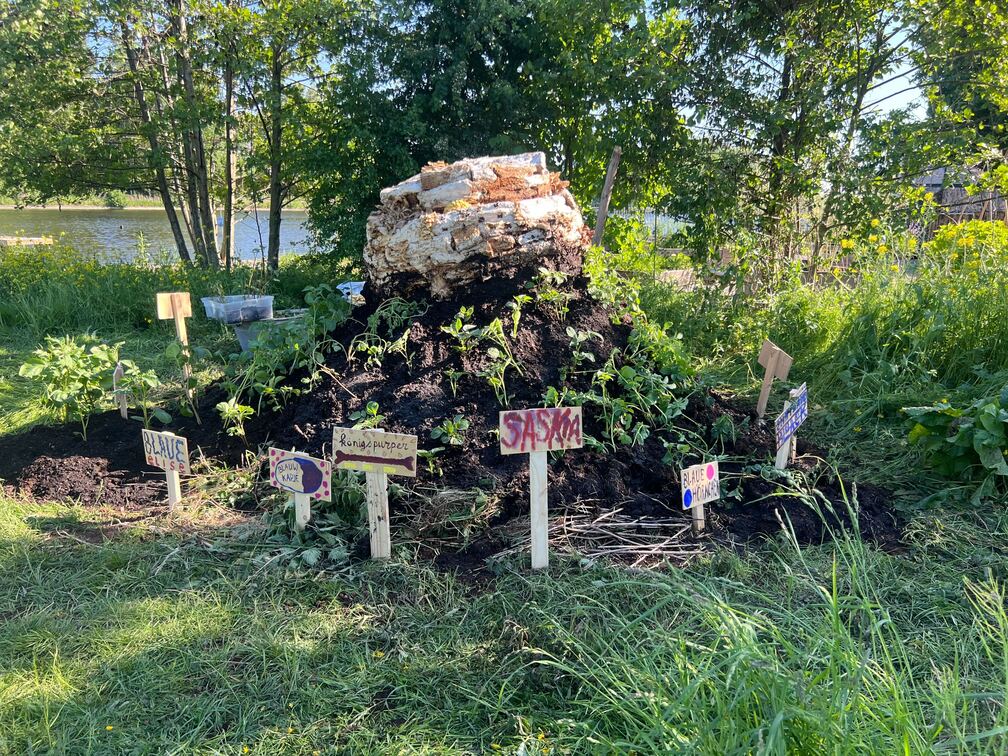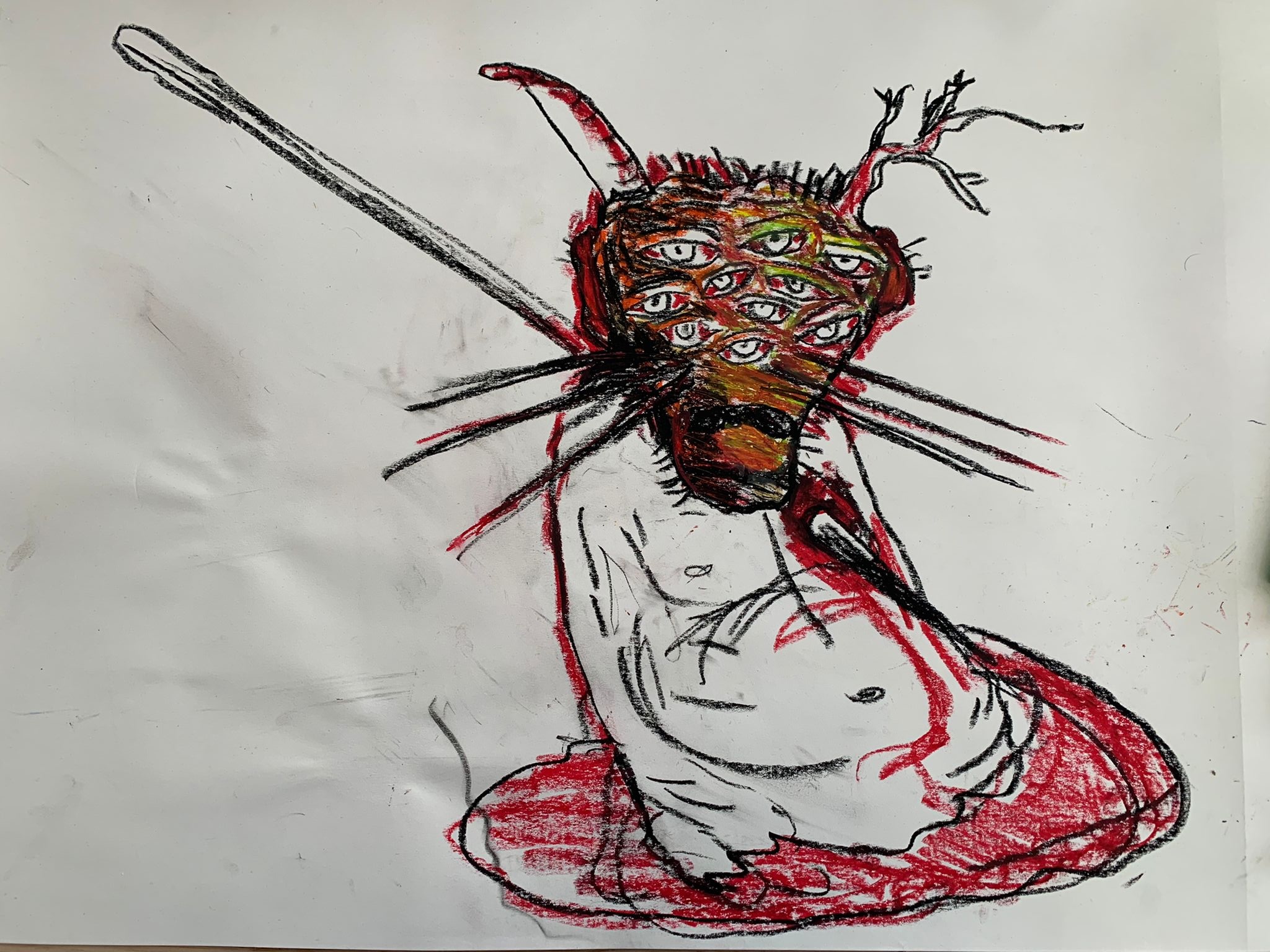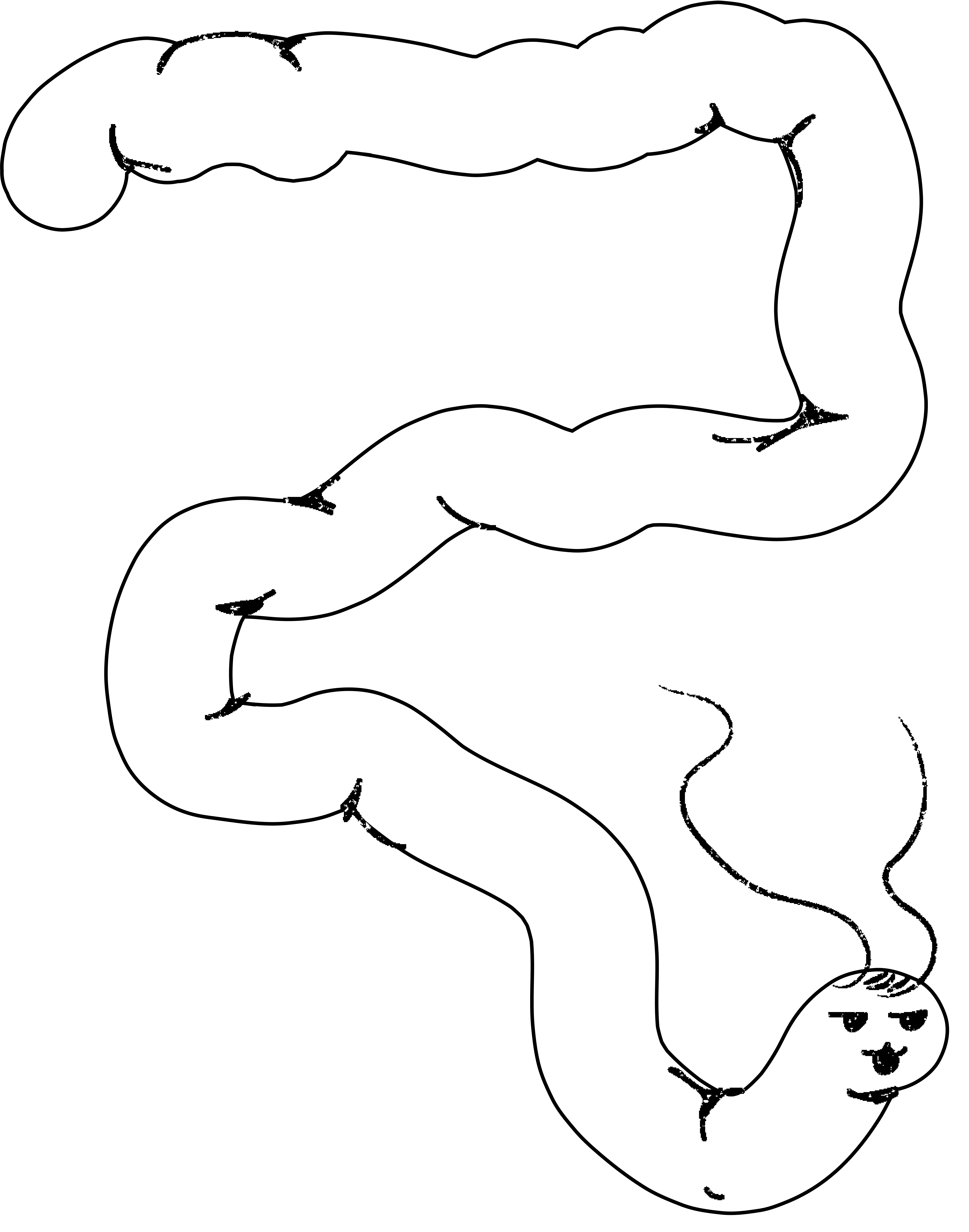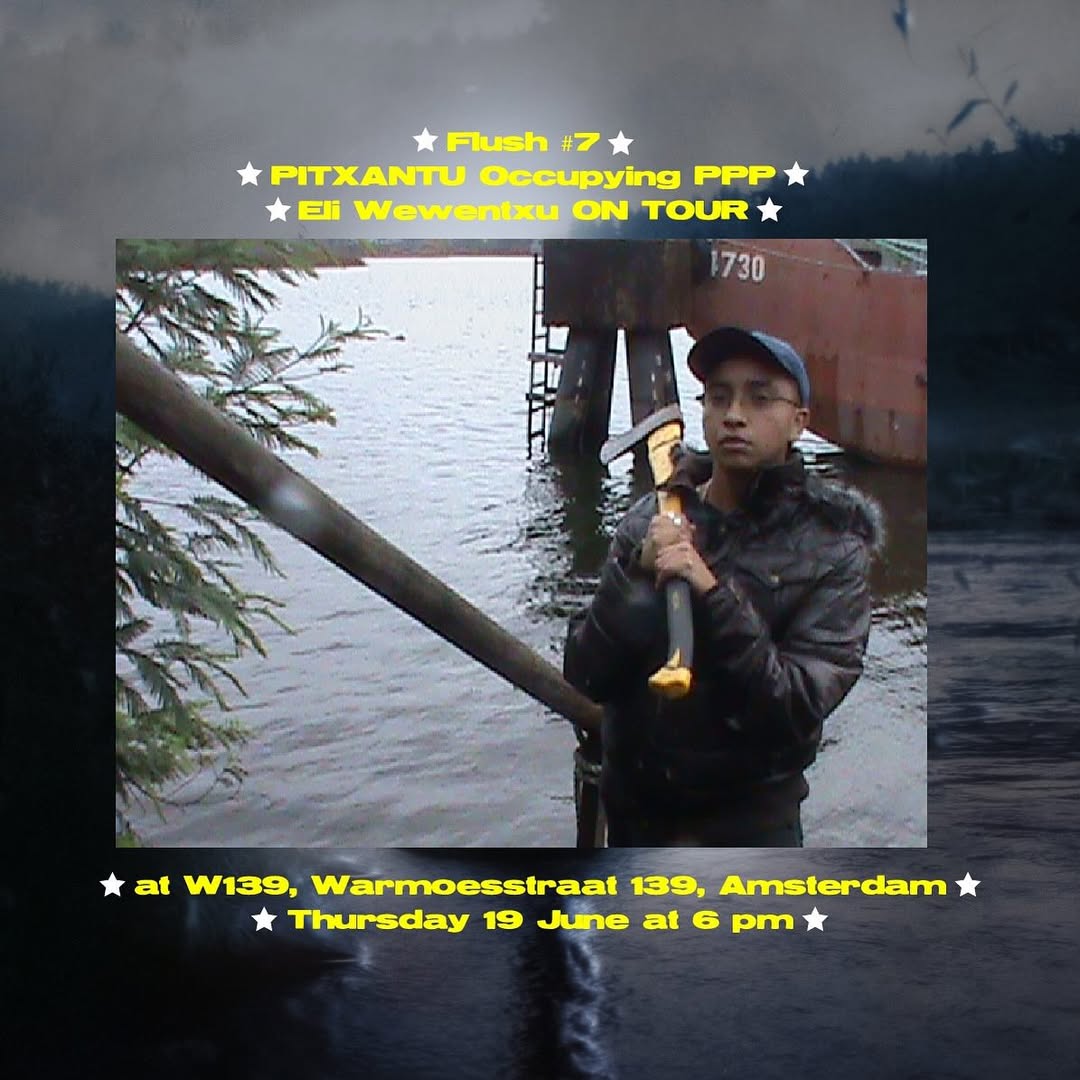Deze dag vol workshops toont de potentie van het partijbureau van de PPP dat door Doe-Het-Zelf Werkplaats gezamenlijk is ontworpen en gebouwd: met het maken van een harnas om je te beschermen, met drijvende ink printen, book binden, en mythische verhalen schrijven.
De aanleiding voor dit project was de wens om collectieve structuren en werkmethodes te ontwikkelen: Hoe co-creëren we een ontwerp? Hoe verdeel je taken en verantwoordelijkheden? Hoe neem je gezamenlijke beslissingen? We maakten gebruik van infrastructuren die ruimte bieden voor improvisatie, complexiteit en een gedeeld fundament (en Excel-sheets). Ons doel was om deze kennis overdraagbaar te maken. Nu de opbouw is afgerond, willen we als collectief terugkijken op hoe onze intenties in de praktijk zijn uitgepakt.
Het kantoor is ook een werkplek: voor het telen van aardappelen, het maken van inkt, posters, publicaties en aardappelpapier – naast de producten uit de PPP-fabriek achterin W139.
Doe-Het-Zelf Werkplaats is een werkplaatsruimte en gemeenschappelijke tuin in Rotterdam – gratis te gebruiken, gekraakt en collectief gerund. Bezoekers kunnen er hun fiets repareren met gereedschap en gedoneerde onderdelen, buren kunnen ongehinderd kruiden uit de tuin plukken. De ruimte is gericht op gezamenlijk leren, zonder oordeel en met wederzijdse vrijgevigheid. Het is een omgeving waar mensen veilig met elkaar in contact kunnen komen, op het grensgebied van wat ze al weten en wat ze proberen uit te vinden. DHZ bestaat uit Deniz Gülyurt, M.B. McGregor, Christian Lesmes, Florian Henschel, Sapozhnikov Mikhail, Linda Zeb Hang, Tomi Hilsee en Saina Salarian.
Programma
DHZ Introductie
12:00 – 13:00
Rhythmic Publications: Floating Ink Printing And Binding
Linda Zeb Hang
13:00 – 15:00
Leer alles over Suminagashi, de Japanse kunst van watermarmeren, wat in deze workshop wordt ingezet als een grootschalig, collectief drukproces. Deelnemers worden stap voor stap begeleid bij het gebruik van natuurlijke penselen om inktpatronen op het wateroppervlak te creëren, waarbij accordeonwaaier-technieken worden gebruikt om het oppervlak te manipuleren. Vervolgens wordt het ontwerp met de hand overgezet op papier, waarbij elke afdruk uniek is.
Deelnemers maken een print in de speciale waterbak bij W139, waar wordt gewerkt met zes kleuren inkt. Elke deelnemer kan tot vier kleine en vier middelgrote afdrukken maken. De afdrukken worden gebundeld (gevouwen tot katernen en met naald en draad met de hand ingebonden) tot een boekje in de volgende workshop.
Linda Zeb Hang is a queer Hmong-American, Rotterdam-based artist best known for their conceptual artist’s books, hypnagogic book design, sculptural installations, fine art printmaking and experimental video art. Their content of scanning voices cross-sections the invisible density, flavor profiles, and omniscient presence of the woven, yet frayed environment. They consider innovative organizing to be objective oxygen, interacting with media to animate the duality and ‘non-duality’ of space. They shape sound and material cultures through technical experimentation, working spontaneously, collecting and generating information to arrive at a knotty mixed-media synthesis. Flexibility, instinct and intuition are their chosen guides. Their tools are digital, machine age and ‘primitive.’
Mythical Storytelling: Potato Power Parables
Deni
14:00 – 16:00
Deze maand was de aardappel het uitgangspunt om dieper te graven, zowel in de aarde als in onze verhalen. Vaak ingezet om koloniale mythen te ondersteunen, onthult de aardappel de verstrikte werkelijkheden van de mondiale geschiedenis: hoe de hulpbronnen van het Mondiale Zuiden al eeuwenlang het Noorden voeden, terwijl moderne verhalen vaak het omgekeerde beweren.
In deze workshop onderzoeken we hoe dominante verhalen – voortgebracht door koloniale en kapitalistische machten – onze kijk op geschiedenis, identiteit en verbondenheid hebben gevormd. We stellen de vraag: wiens verhalen worden verteld, en wiens verhalen worden verzwegen?
Samen lezen we een kort fragment om de betovering van zogenaamd “realistisch” kapitalistisch vertellen te doorbreken, en keren we ons vervolgens naar de kracht van mythisch vertellen. We schrijven klaagliederen, gebeden, dromen en wensen en heroveren zo onze stem en verbeelden nieuwe werelden.
Of je nu wilt rouwen om wat verloren is, dromen van wat mogelijk zou kunnen zijn, of simpelweg de wereld wilt beschrijven zoals jij die ziet—dit is een ruimte om verhalen te schrijven die alleen jij kunt vertellen. Kom met een open geest, klaar om te bevragen, te verbeelden en je eigen mythes te schrijven—geworteld in waarheid, verzet en mogelijkheden.
Deni is a Rotterdam-based collective member who is interested in topics of individuality, nature of experience and perception, and creating multi-sensory media for self-expression. She is studying neuroscience and working in a wet lab everyday, where she gets to test and explore her own perceptual space and relatedness to the living organisms she is “manipulating.” She brings together her different selves to explore the boundaries of her material existence and expresses these ideas mostly through music, collages, and drawings.
Press Play and Protect: Making Wearable Resistance (Armor) & Experience Radical Listening
MB McGregor en Saina (DHZ)
15:00 – 18:00
Deze workshop brengt maken en luisteren samen als manieren om na te denken over bescherming—zowel persoonlijk als collectief. We beginnen met een praktische sessie waarin je draagbare objecten kunt maken van afgedankte fietsonderdelen, zachte stoffen en gevonden materialen. Zie het als een soort doe-het-zelf harnas: iets dat kracht, zachtheid, protest of spel kan uitdragen. Er zijn materialen aanwezig: binnenbanden, kettingen, zeilogen en textiel.
Daarna verzamelen we voor een gezamenlijke luistersessie, een sonische ceremonie metgeluiden en liederen van verzet uit verschillende delen van de wereld. Dit is een uitnodiging om tot rust te komen, te luisteren en te reflecteren. Er is geen ervaring nodig, alleen openheid.
MB (MaryBrown) McGregor is a Rotterdam-based, California born landscape architect, DJ and queer interdisciplinary artist whose practices live at the intersection of spatial design, social intervention, and collective resistance. They work to challenge status quos — whether through public space design, interactive installations, or nightlife politics.
Saina is a Netherlands-based Iranian researcher and organizer. Their work floats somewhere between music and politics. Centering radical care and joyful activism in their work, Saina’s interests range from sound to solidarity; they aim to weave a sound tapestry dedicated to the interconnected struggles for liberation.
Sonic Ceremony
18:00 – 20:00
Later gaan we over op een gezamenlijke luistersessie, een sonische ceremonie met geluiden en liederen van verzet uit verschillende delen van de wereld. Het wordt een ruimte zijn om te zijn of te bewegen met verdriet, woede en onzekerheid – om deze emoties te transformeren door middel van geluid en gedeelde aanwezigheid. In een wereld waarin we voortdurend overspoeld worden met geweld en gruweldaden, biedt deze bijeenkomst een moment om stil te staan, te luisteren en samen te verwerken. Door middel van beweging, geluid en schrijven zetten we politieke woede om in verbeelding, actie, troost en verzet. Ervaring is niet nodig, alleen openheid.
Tijdens deze workshop wordt maken een vorm van verzet, en geluid een manier om ruimte te bieden. Of je nu een harnas bouwt of gewoon aanwezig bent: deze workshop gaat over aanwezigheid, bescherming en protest in vele vormen.
